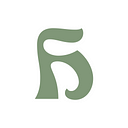History of the Quran Printing in China
Bismillah…
The Quran was first introduced to China along with Islam during the Tang Dynasty and Islam has a history of more than 1,300 years. Due to technological limitations and conditions at that time, for a long time, the Qur’an circulating in China was basically handwritten and copied by Muslims in various parts of China. This is related to the development of Arabic Calligraphy with Chinese Style.
With the spread of Islam gradually to the Yunnan area and to meet the needs of studying Islam, Muslims in Yunnan printed the Qur’an in two different periods and this was done using the Woodblock technique.
Woodblock technique itself is a technique for printing text or images that is widely used in East Asia originating from China and is commonly used as a printing method on textiles and later on paper.
Tongzhi Engraving: The first wooden block prints of the Qur’an in China
In the late Qing Dynasty era, under Du Wenxiu’s leadership, people from all ethnic groups in western Yunnan made quite a strong anti-Qing movement. After the Anti-Qing Activities in the city of Dali, Du Wenxiu placed great importance on spreading and building Islamic culture, and later initiated the publication of the first printed Qur’an in China.
During this period, Du Wenxiu exerted a lot of human and material resources and finally finished printing the Qur’an one year after Tongzhi became emperor (1862). Du Wenxiu wondered what name this first printed Qur’an would give. Because Du Wenxiu found it difficult for Chinese-speaking Chinese Muslims at that time to use the pronunciation of the Qur’an to be “Gulan (古 兰)”, which was a strange word to pronounce, so he wanted to give the Qur’an an elegant and respectable Chinese name.
Du Wenxiu then wrote a letter to his teacher Ma Fuchu (Yusuf Ma Dexin), a Muslim Scholar, asking for advice. At Ma Fuchu’s suggestion, the first printed Qur’an was published under the name “Bao Ming Zhen Jing (宝 命 真经)” which translates roughly to “Treasure of Life and Truth” (CMIIW). (Secret Records of Du Wenxiu’s House / 杜文秀 帅府 秘录 Vol. 1, pp. 104–105)
This Tongzhi Engraving later became the first complete Woodblock Qur’an in Chinese history, with a total of 30 volumes. Each volume is a separate volume, ranging from 28–30 pages each. These first Quran prints used wire bindings and were placed in a special wooden box, which was beautifully tied.
In the eleventh year of Emperor Tongzhi (1872 AD) or ten years after the launch of the first edition of Bao Ming Zhen Jing (宝 命 真经), the original wooden blocks for the prints were destroyed because of the Qing Dynasty troops invading the city of Dali, Some of the Qur’an that has been published confiscated by the Qing Army. There are some prints saved but most of them are only scraps and incomplete.
Guangxu Engraving: the second most complete wooden carved version of the Chinese Quran in existence
In the 21st year of Emperor Guangxu (1895 AD), the Muslim leader Ma Lianyuan, with the support of donors from several regions in China, began to recreate the second version of Bao Ming Zhen Jing (宝 命 真经).
This second version was completed at the Nancheng Mosque, Kunming. Ma Lianyuan personally led most of the work. The Guangxu Engraving of the Quran inscriptions on the Guangxu were written by Tian Jiapei, a well-known Arabic scribe and jurist at the time. Ma Lianyuan checked himself word by word so that the results were accurate. Ma Lianyuan also employed more than 20 skilled carvers from Sichuan to engrave this second version of printed wood blocks.
It is said that Ma Lianyuan asked the carvers to clean themselves before starting work. When carving, each line of the Qur’an is immediately wrapped in cloth so that the fingers do not touch the inscribed Qur’an, and a special person is assigned to monitor it. The engraving process can be said to be very strict and serious.
The entire carving took three years to complete, and cost 8,500 taels of silver (Tael is the unit of weight used in China at that time, 1 tael = ± 38 grams), all of which was contributed by Chinese Muslims inside and outside the Yunnan province. This can be called a big cultural project with a big investment, which is very important for the Hui Muslim of Yunnan to increase the national and cultural spirit at that time.
After the reform of the dynasty in China, to better excavate, sort, study, and inherit Chinese traditional Islamic culture, the Yunnan Islamic Association used modern technology between 1988 and 1998 to photocopy Guangxu Bao Ming Zhen Jing’s engraving, and a total of 6,000 copies were published and distributed. Apart from meeting the needs of the majority of Muslims for religious studies and activities, it also plays a positive role in promoting the spread of Islam in China.
With the widespread spread of Islam in China and to meet the needs of daily study and religious activities, Yunnan Muslims printed the Qur’an twice through a woodblock printing system during the Tongzhi and Guangxu periods of the Qing Dynasty, which pioneered the mass printing of the Quran in the history of the development of Islam in China.
Wallahu A’lam.
